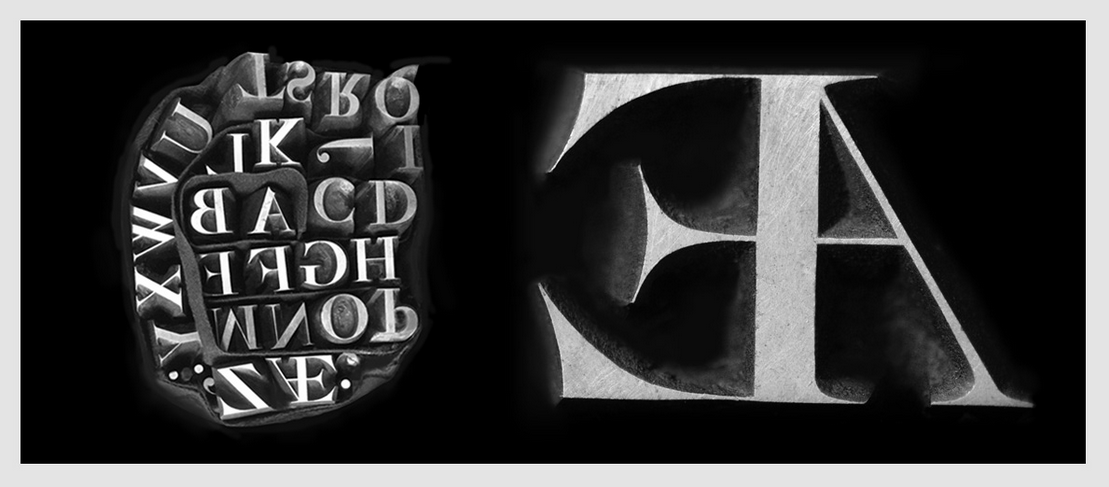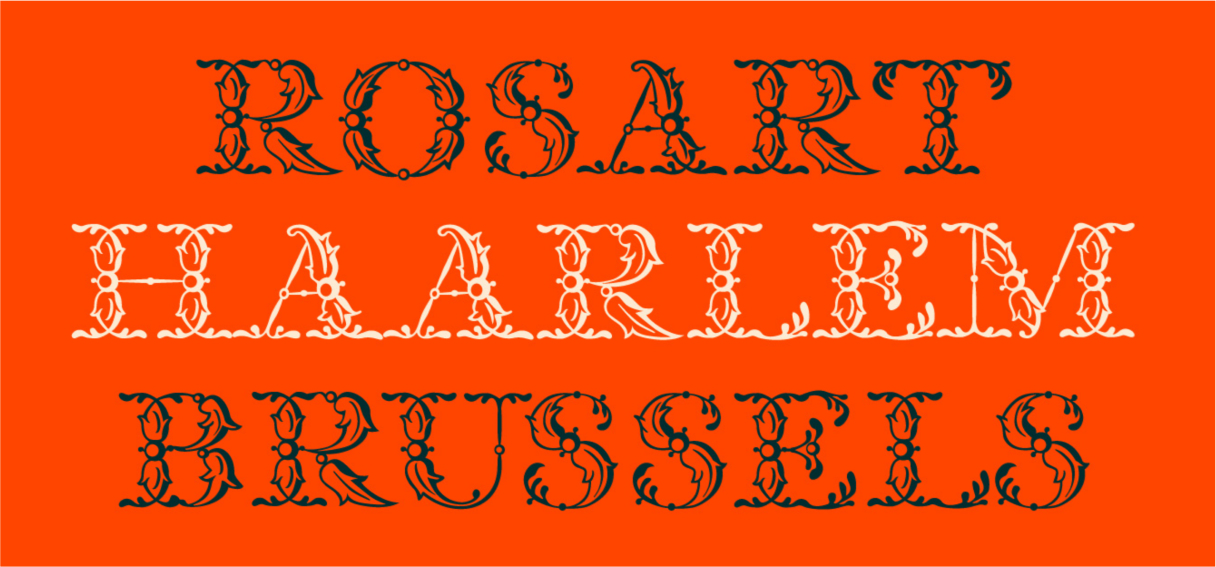Writing about Typography
Students at the Plantin Institute of Typography in Antwerp documented their research of the 18th-century Belgian punchcutter Jacques-François Rosart and turned it into a fabulous website called The Rosart Project. But what’s so interesting here is that the research was treated as a network of publishing projects; an archive, a book, a typefamily, a website.
First up, the team photographed Rosart’s dazzling punches from the North Holland Archives in Haarlem:

Photos by Walda Verbaenen
...and then they wrote a nifty book about their research. But not only that, the team then made revivals (or remixes) of Rosart’s letters, creating a number of lovely fonts in the process. Especially these flourished capitals below:

Besides the course-as-publishing-project, here’s another punk rock thing: the students all worked towards building this typographic system together. This is odd because most type courses work like courses of any field: students are effectively in competition with one another, working on their own projects. But this seems like a much healthier way to foster collaboration and to create a more beautiful, complete thing.
Also? The website is fantastic and did I mention that this whole publishing platform thing is fascinating to me? It’s how all courses should be run. Students working towards a single goal, making things together, and then publishing all that work to the outside world.
But there was a moment in reading about all this where I started to feel the familiar oof of typography writing. It’s the part where the website describes what a type design revival is:
A revival is based on historical models, made suitable for contemporary use, adapted to the typographical and technical needs of today, but nevertheless relies on a personal response to the historical style.
This is where things began to sour for me because—ugh—what does any of this mean? The words make sense but it’s written in a style that’s familiar to anyone that reads about the field of typography. It’s what’s known to folks outside the field as “academic writing” but it’s what I consider to simply be bad writing—it’s waffling and unclear. In my experience, the word “nevertheless” is a good sign that a paragraph needs to be ejected into the Sun and the whole piece desperately requires a rewrite. As much as that might hurt.
Read this sentence again though because I think it’s extremely important if we want to become good writers, regardless of the field in which we write:
A revival is based on historical models, made suitable for contemporary use, adapted to the typographical and technical needs of today, but nevertheless relies on a personal response to the historical style.
The most damning problems here are technical; it’s difficult to read and it’s unclear. But worse again it’s boring. Look at the photographs of Rosart’s punches, or the book, or the design of any of those fonts. Look at the visual design of the website and how gobsmacking it all is packaged together and then read that sentence one more time:
A revival is based on historical models, made suitable for contemporary use, adapted to the typographical and technical needs of today, but nevertheless relies on a personal response to the historical style.
There’s no dance, no swagger to it. It’s like walking through a swamp of porridge in the dark. There’s nothing to play with, nothing insightful or childlike, and so it functions as most writing does today: simply fulfilling a word count.
But writing can be so much more than this. Every sentence can be as playful as the flairs in a type designer’s serifs, as straight-forward and focused as the great marble chunks they cut out of each letter.
Now I know I’m being quite mean when I point to this one sentence over and over again but I’ve noticed this style of writing bleed into almost every subject. The very worst kind of writing is this academic style (followed shortly thereafter by the writing found on art museum placards).
Okay, so we get it. The words ain’t good. How do we fix them? How do we avoid falling into the trap of this style? Well, let’s attempt a rewrite:
Type designers will often look at letterforms that were made in the past and then redraw them for modern day use. This is called a “revival” by the type community but I like to think of it as a remix: a type designer will unavoidably apply their own style and harmonies, their own deviations and melodies to the song.
Every remix is different, every remix is important.
It’s not great, but it’s certainly better. There’s not much dance or swagger to it and it’s not High Literature but dammit I can now read the thing and I don’t have to, parse, the, thoughts, with, so, many, commas. It feels like the writing has a point of view, with something reasonable to say. It feels like I’m talking to an excitable friend.
It sounds like a person is writing.
I think this is the most frustrating thing about being interested in the field of typography. The art is beautiful but the description of the art pales in comparison to it. And whenever I read almost anything about typography I find myself nodding off, getting frustrated, or reminded of Orwell’s Politics and the English Language, an essay where Orwell grabs us all by the lapel and begs us to bring more to our keyboards:
In certain kinds of writing, particularly in art criticism and literary criticism, it is normal to come across long passages which are almost completely lacking in meaning. Words like romantic, plastic, values, human, dead, sentimental, natural, vitality, as used in art criticism, are strictly meaningless, in the sense that they not only do not point to any discoverable object, but are hardly even expected to do so by the reader. When one critic writes, ‘The outstanding feature of Mr. X’s work is its living quality’, while another writes, ‘The immediately striking thing about Mr. X’s work is its peculiar deadness’, the reader accepts this as a simple difference opinion. If words like black and white were involved, instead of the jargon words dead and living, he would see at once that language was being used in an improper way.
I want to underline how much I adore The Rosart Project and I only criticize it because I want to see the whole typographic community break the shackles of this style of writing. So here is my advice for type designers, if I might be so bold: write to swoon, to convince, to make a stranger fall in love. Abandon the academic style, because it’s making your beautiful work so very boring.